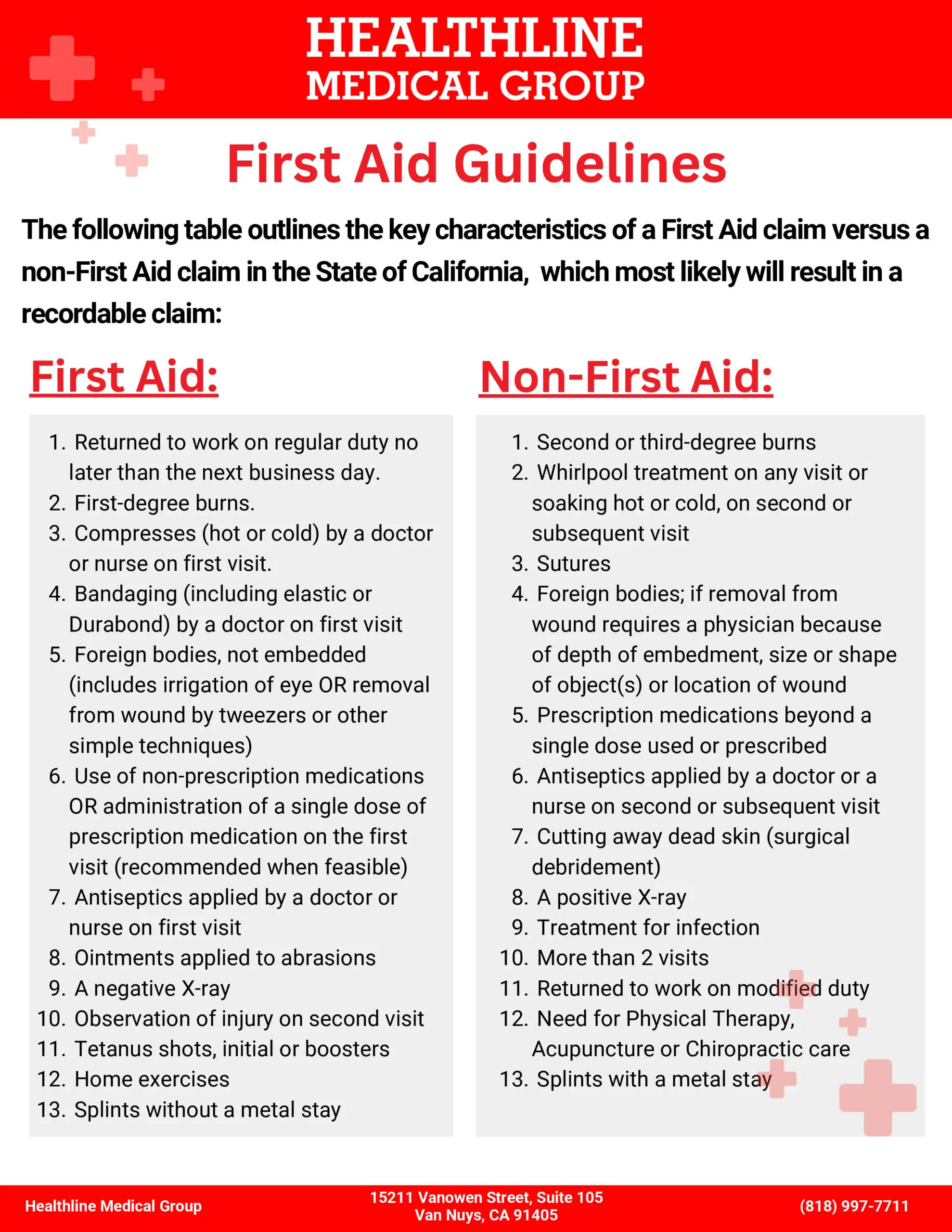Reportable vs. Recordable Injuries

For HR and Safety Managers, understanding the difference between recordable and reportable workplace injuries under OSHA rules is critical for compliance and maintaining workplace safety. Here’s what you need to know:
What is the difference between OSHA Recordable Injuries, Reportable Injuries, and First Aid in California?
The distinction between OSHA recordable incidents and first aid cases is important for workplace safety and reporting requirements. Below is an overview of the differences between recordable injuries, reportable injuries, and first aid:
Recordable Injuries
Recordable Injuries are work-related injuries or illnesses that must be documented in an internal log called the OSHA 300 Log. Examples include:
- Injuries requiring medical treatment beyond first aid
- Loss of consciousness
- Days away from work or restricted work duties
- Significant injuries needing a physician’s evaluation, such as stitches, splints, or prescription medications
In California, even a prescription for physical therapy may classify an injury as recordable, as it typically involves structured treatment beyond first aid. First aid, on the other hand, includes immediate care for minor injuries, like cleaning wounds or applying ice packs, without ongoing treatment.
Reportable Injuries
Reportable Injuries are more serious cases that must be reported directly to OSHA within specific timeframes:
- Fatalities: within 8 hours
- Hospitalizations, amputations, or loss of an eye: within 24 hours
First Aid Cases
First aid is defined by OSHA as any one-time treatment and subsequent observation of minor injuries that do not require medical treatment. Examples of first aid include:
- Cleaning minor wounds
- Applying bandages
- Using ice packs for swelling
- Treatment for minor burns or scratches
- Splints with a Metal Stay: In California, whether a splint with a metal stay is considered first aid depends on the injury and treatment. For minor injuries like sprains or minor fractures, it may qualify as first aid if no further medical care is needed. However, for more serious injuries requiring medical intervention, it would not. Accurate documentation is key, and consulting a medical or workers’ compensation expert can clarify classification.
- Immunizations as Preventative Care: A tetanus immunization is typically not OSHA recordable, as it is considered first aid under OSHA guidelines and often serves as a preventive measure unrelated to a workplace injury. However, if administered due to a work-related injury, such as a puncture wound, its classification may differ. Similarly, if an employee has an adverse reaction to an immunization and requires medical care, that may result in a recordable incident. For clarity, consult OSHA guidelines or a safety expert.
OSHA Recordkeeping Requirements
OSHA requires most companies with 10 or more employees to maintain records of workplace recordable and reportable injuries and illnesses. The key forms include:
- OSHA 300 Log: A detailed log of work-related injuries and illnesses.
- OSHA 300A Summary: A summary of the OSHA 300 Log, posted for employees to view from February 1 to April 30.
- OSHA 301 Incident Report: A detailed report of each incident.
First aid cases do not need to be recorded on the OSHA 300 log, as they do not meet the criteria for recordability.
Key Points for HR and Safety Managers
Classify Injuries Correctly
Any injury caused by a work activity is usually work-related and may require recording or reporting. Remember: medical treatment beyond first aid makes an injury recordable.
Understand the Difference Between First Aid and Recordable Treatment
OSHA defines first aid as one-time or minor treatment for injuries such as cleaning minor wounds or applying bandages. For example, applying a splint with a metal stay may be considered first aid if no further treatment is required. However, if the splint indicates a more serious injury or involves additional medical care, it becomes recordable.
Reporting Timeframes
- Fatalities: Report to OSHA within 8 hours.
- Hospitalizations, amputations, or loss of an eye: Report within 24 hours.
- Recordable injuries: Add to the OSHA 300 Log within 7 days of learning about them.
Special Considerations for Immunizations
Routine vaccinations, such as flu shots or tetanus immunizations, are generally considered first aid and not recordable unless they address a specific work-related injury or result in medical treatment beyond first aid. For instance, if a tetanus shot is administered following a workplace puncture wound, it may require further evaluation to determine if it’s recordable.
Electronic Submission
Certain businesses, such as those with 250 or more employees or operating in high-risk industries, must submit their OSHA 300A Summary electronically.
Protect Employee Privacy
Ensure no private medical information is shared publicly when posting or sharing incident details.
Final Tip
After any reportable or recordable incident, investigate the root cause to prevent recurrence. By following OSHA’s guidelines and properly classifying injuries, you’ll ensure compliance and foster a safer workplace.

